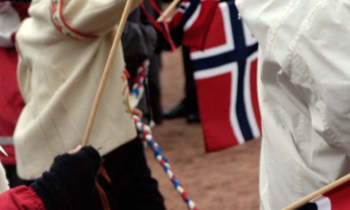 Norwegian daily Dagbladet writes a lot of national and international financial instituions recently invest on private child welfare services in Norway. As there is no limitations on who can invest, child welfare turns to be the most lucrative investment.
Norwegian daily Dagbladet writes a lot of national and international financial instituions recently invest on private child welfare services in Norway. As there is no limitations on who can invest, child welfare turns to be the most lucrative investment.
President of anti-privatization think-tank The Campaign for the Welfare State (For velferdsstaten), Linn Herning says the trend is worrying.
– With such high profitability, we are afraid of commercial child welfare attract investors who are primarily looking for return on capital,” says Herning to Dagbladet.
It appears that around three quarters of commercial child welfare services are now delivered by five large groups, three Swedish and two Norwegian who have made child welfare and other welfare services a particularly lucrative industry.
The groups are largely owned by various acquisition funds, registered in Luxembourg, London and Guernsey.
The return on capital these groups have invested in the Norwegian child welfare companies are sky high. On average, total return for all five has been between 22-23 per cent for the last five years. According to Statistics Norway’s overviews, there is no single industry that has been more profitable than commercial child welfare.
According to figures provided by Statistics Norway, 36,800 children received measures from the Norwegian Child Welfare Services at the end of 2015. This means that 2.9% of all children in Norway received some sort of measure. Of these, 12% were aged 0–2 years, 23% 3–5 years, 30% 6–12 years, and 35% 13–17 years. In addition, 6,800 young people aged 18–22 years (1.1% of their age class) received follow-up care.
60% of the 36,800 children received support measures within their families. 16% received support measures while placed outside their homes with the consent of their parents. In the remainder 24% of the cases, children were placed outside their homes after care orders.[2] Of the 14,850 children living outside their homes by the end of 2015, 72% lived in foster families, 14% were old enough to live by themselves with follow-up from the Child Welfare Services, and 8% were taken care of in institutions, while 5% where temporarily placed in private homes awaiting other solutions.
The main reasons for measures (both support measures and care measures) were lacking parenting skills (29%), parents’ mental problems (17%), high domestic conflict level (11%) and parents’ drug misuse (8%).
Statistics Norway has also published some figures according to immigration status: while 2.2% of all children with Norwegian parents received measures, the corresponding figures were 3.2% for children born in Norway by immigrant parents, and 4.9% for immigrant children. The latter group includes minor asylum seekers arriving without parents.
